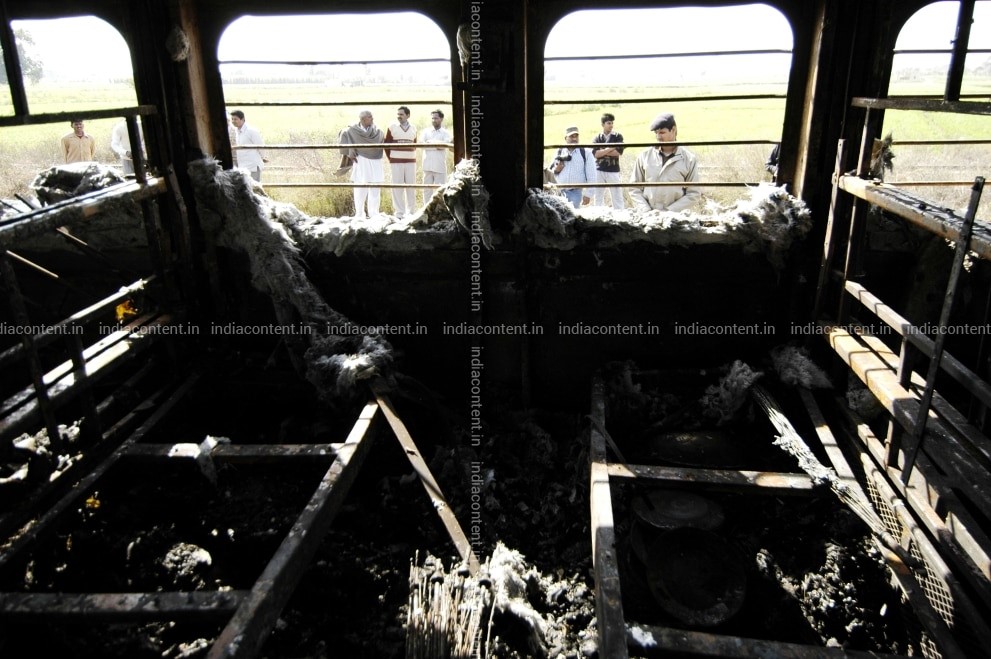

Samjhauta Express Blast Overview
The two blasts in a bi-weekly train connecting Delhi, India, and Lahore, Pakistan, Samjhauta Express was a horrific terrorist attack that occurred around midnight on 18 February 2007. The blasts shook two coaches filled with passengers. The moment the train passed Diwana station near the Indian city of Panipat, the twin blasts killed 68 people and injured several others. Of the 68 fatalities, most were Pakistanis. The victims also included some Indians and three railway policemen.
Samjhauta Express Blast: Full Story
18 February 2007 was a horrific day for the two nations—India and Pakistan—when twin blasts ripped through two coaches of the Samjhauta Express heading from Delhi to Lahore in Pakistan at around 11:53 pm IST when most of the passengers were fast asleep. The deadly incident happened shortly after the train passed through the railway station in the village of Diwana, near the Indian city of Panipat.
After the blasts, the affected coaches caught fire instantly and many passengers were debilitated by the smoke. According to witnesses, passengers who were stuck were heard screaming for help. They were trying to escape but many of them failed to get off in time due to closed train windows. However, the injured passengers were pulled out of the burning coaches by other passengers and residents.
The brutal terrorist attack left many dead and several injured. Most of the dead and injured were Pakistanis, though there were some Indians, too, including railway workers, who were killed in the blasts. Initial identification of the victims was more than difficult as many bodies were charred beyond recognition. As rest of the train coaches remained unaffected after the blast, the train continued to move towards the border town of Attari. There, passengers were transferred to a Pakistani train which took them to Lahore.
During the investigation, suitcases with explosives and flammable material, including some undetonated bombs were found. Inside one of the undetonated suitcases, a digital timer encased in transparent plastic was packed alongside a dozen plastic bottles containing fuel oils and chemicals. After the blast, eight unaffected coaches were allowed to move to Lahore with passengers.
As per several media reports, the officials of both the countries speculated that the committers intended to disturb the improving relations between India and Pakistan, as the attack took place just a day before Pakistani Foreign Minister Khurshid Mahmud Kasuri was to arrive in India to resume peace talks with Indian leaders.

Also, a video of the narco-analysis interrogation of terrorist Safdar Nagori showed the former Simi chief and terrorist admitting that the Samjhauta Express blasts were carried out by those trained in Pakistan. He named Simi operative Adbul Razzak as the person responsible for the Samjhauta blasts in the video. The video of the test was broadcast by Times Now in 2017.
Besides, India’s National Investigation Agency (NIA) charged eight people in the case, including Swami Aseemanand, a Hindu cleric, previously affiliated with the Rashtriya Swayamsevak Sangh. While Aseemanand had been released on bail, three persons charged in the case are escaping, and three others are in jail. Sunil Joshi, the alleged mastermind, was killed in 2007. An NIA special court was scheduled to issue a verdict on the case on March 14, 2019, but the last-minute plea of a Pakistani national had resulted in the postponement of the decision.
During interrogation, Aseemanand also confessed that he was involved in the bomb blasts at Malegaon in Maharashtra in 2006 and 2008, both of which targeted Muslims. This linked him closely to Hindu terror group Abhinav Bharat which counts Sadhvi Pragya as one of its founder members.
The later statements of Swami Aseemanand in which Sunil Joshi telling him of involvement of his men in the blast had confused the investigators. In 2016, one of the investigating officers stated that they had investigated the Islamists including Safdar but didn’t find them involved. Razzaq who had been in prison since 2005 had been interrogated and had brought Qasmani to the notice of Intelligence Bureau as an important Lashkar financier. He was questioned related to the case, but no evidence of his involvement was found. Some officers had also questioned the accuracy of narco-analysis.
Five years after the twin blasts, the NIA had arrested Kamal Chouhan, the man accused of planting the bomb on the train, from Indore. Chouhan, during his interrogation, told the probe agency that he planted a bomb in Samjhauta Express train.
Besides, other allegations also concurred on Lashkar-e-Taiba. A United States report declared Arif Qasmani to be involved in the attack. Subsequently, after consulting with the United Nations, the United States declared him an international terrorist.
Questions were also raised over a Pakistani national who was arrested after the blasts as he wasn’t carrying valid papers. He was seen as suspicious by the investigators but later discharged, according to an investigative officer assigned to the case.

The Samjhauta Express generally known as the Friendship Express is a bi-weekly train—Thursday and Monday—that runs between Delhi and Attari in India and Lahore in Pakistan. The word ‘Samjhauta’ means “agreement”, “accord” and “compromise” in both Hindi and Urdu languages.
Images Related to Samjhauta Express Blast on India Content
The India Content website has a huge stock of high-definition images related to Samjhauta Express blast. The pictures are available in three sizes – small, medium and large.
You can purchase various other content images from the https://www.indiacontent.in